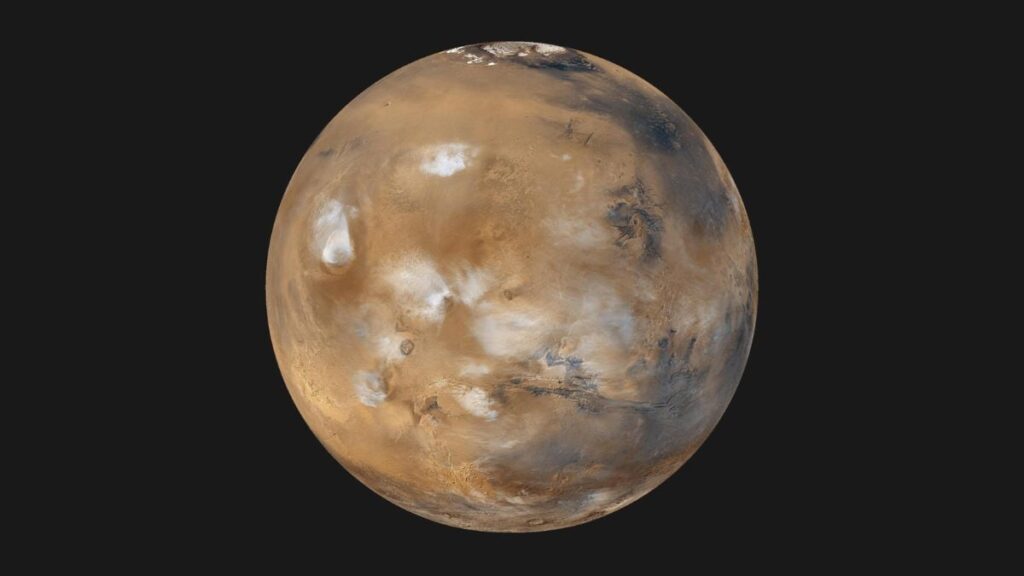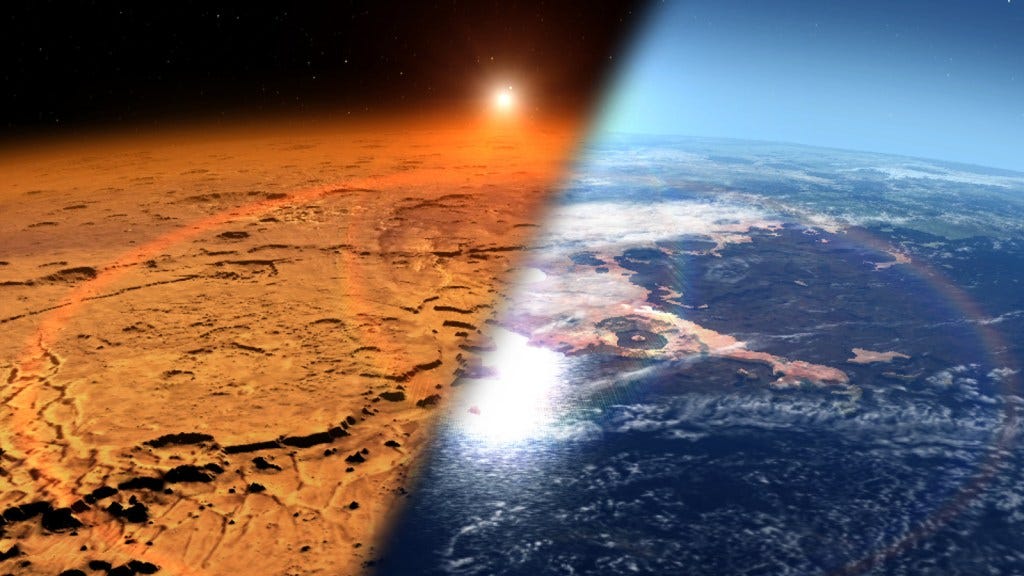Mars’ Water Loss Accelerates Near the Sun, Hubble and MAVEN Reveal Seasonal Orbit Effects
New Insights on Mars’ Water Loss
Recent research from the Hubble Space Telescope and NASA’s Mars Atmosphere and Volatile Evolution (MAVEN) mission sheds light on how Mars loses water more rapidly when it is closest to the Sun. This phenomenon, linked to Mars’ elliptical orbit, highlights how the planet’s distance from the Sun affects the rate at which it sheds its remaining water. At perihelion, the point in its orbit where Mars is nearest to the Sun, solar radiation intensifies, heating the atmosphere and accelerating the escape of hydrogen atoms. This process has contributed to Mars’ transformation from a warm, water-rich environment billions of years ago to the cold, dry world we see today.
Seasonal Water Loss Variations
The study underscores the role of seasonal changes in driving water loss on Mars. John Clarke from Boston University explains that Mars sheds water in two main ways: either it freezes into the ground or breaks down into hydrogen and oxygen atoms, with the hydrogen escaping into space. While Mars still harbors water in underground reservoirs and its polar ice caps, much of the water from its ancient oceans and lakes has vanished over time. Perihelion conditions enhance the process, as water vapor moves into the upper atmosphere, where solar radiation breaks down water molecules, and hydrogen atoms are then carried away by solar winds.
The Role of Mars’ Orbit
Mars’ elliptical orbit brings it significantly closer to the Sun during certain times of the Martian year. At these times, the increased solar energy interacts with the planet’s atmosphere, intensifying water vapor escape. This cyclical effect demonstrates how the planet’s orbital dynamics play a crucial role in its current atmospheric conditions. MAVEN’s measurements have revealed that the intensity of hydrogen loss spikes during this period, leading to long-term changes in the planet’s water inventory.

Mars’ Lost Water History
Over three billion years ago, Mars is believed to have had an Earth-like climate, with abundant surface water, including rivers, lakes, and perhaps even oceans. However, over time, the weakening of its magnetic field allowed solar winds to strip away much of its atmosphere, and with it, the water. What remains today is largely locked in polar ice caps or buried beneath the surface, with only small amounts of vapor occasionally entering the atmosphere. The new research helps to understand the final stages of this loss and provides clues about Mars’ potential habitability in its ancient past.
Current Impacts on Mars Exploration
Understanding how Mars continues to lose its water is critical for future missions aimed at exploring the planet’s potential for life and human colonization. If water loss persists at this accelerated rate, it could present challenges for sustaining human life on Mars. However, this also emphasizes the importance of studying and potentially harvesting the planet’s remaining water resources, such as ice deposits, which are key to supporting future explorers. Additionally, these insights provide valuable data that could guide the search for life, both past and present, on the Red Planet.
Ongoing Missions and Future Studies
Both the Hubble Space Telescope and MAVEN continue to provide critical insights into Mars’ atmospheric processes. By tracking how solar activity affects the planet’s water loss, these missions deepen our understanding of Mars’ evolution. Future missions, including the European Space Agency’s ExoMars mission and NASA’s Perseverance Rover, may use this data to focus on regions where water may still be present. As scientists study how Mars sheds its water, they gain a better grasp of planetary atmospheres across the solar system, contributing to broader research on planetary habitability and atmospheric evolution.


















